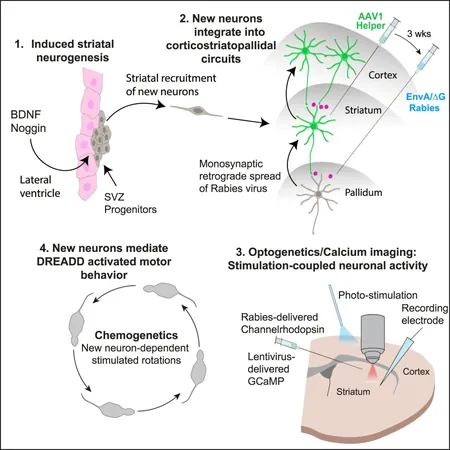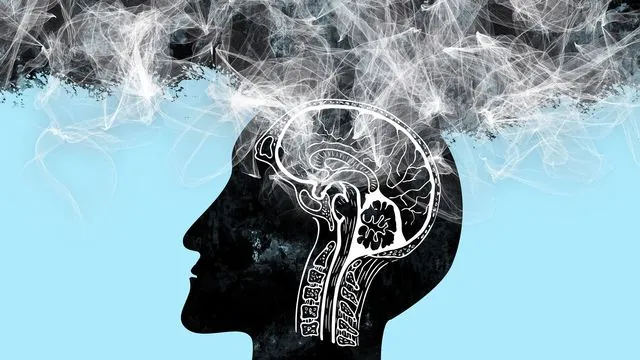
Unlocking the Brain's Healing Potential: New Neurons Could Transform Huntington's Disease Treatment
2025-04-07
Author: Daniel
Recent groundbreaking research reveals that the adult brain has the remarkable ability to generate new neurons, offering hope for reversing damage caused by Huntington's disease and similar neurological conditions. This innovative study highlights the potential of harnessing the brain's natural repair mechanisms to restore essential motor functions.
Dr. Abdellatif Benraiss, a key author of the study published in Cell Reports, stated, “Our research shows that we can encourage the brain's own cells to grow new neurons that seamlessly integrate into the circuits controlling movement.” This discovery paves the way for possibly slowing the progression of Huntington's disease and restoring lost neural functionality.
The Surprising Resilience of the Adult Brain
For decades, scientists believed that the adult brain was incapable of producing new neurons, a concept known as neurogenesis. However, current findings indicate that certain areas of the brain, particularly the ventricular zone adjacent to the striatum—an area severely affected by Huntington's disease—harbor progenitor cells that can create new neurons. While these cells are predominantly active during early development, they transform into supporting cells, or glia, shortly after birth.
The concept of adult neurogenesis gained traction in the 1980s through studies of songbirds, particularly canaries, renowned for their learning abilities and capacity to generate new neurons. Research has pinpointed key proteins involved in this process, such as brain-derived neurotrophic factor (BDNF).
Further investigations have shown that introducing BDNF, along with another protein called Noggin, can encourage progenitor cells in mouse brains to generate new neurons, particularly medium spiny neurons—the very cells lost in Huntington’s disease. Excitingly, similar outcomes have been observed in primate models as well.
Rebuilding Neural Pathways
The latest research sheds light on how newly formed medium spiny neurons fit into existing brain networks. Studying a mouse model of Huntington's disease, the researchers found that these neurons successfully integrated with the complex neural circuits responsible for motor control, effectively compensating for the lost functionality due to disease progression.
Researchers employed advanced techniques such as genetic tagging, electrophysiology, and optogenetics to observe the newly generated neurons. “Using these methods, we demonstrated that not only are these cells produced in the adult brain, but they can also functionally restore motor circuits,” explained Dr. Jose Cano, lead author of the study.
A New Horizon for Huntington's Disease Treatments
The implications of this research are profound. By encouraging the brain to replace lost cells with new, functional ones, there is a potential pathway toward restoring communication within the brain’s networks. Benraiss emphasized that these findings suggest a promising regenerative approach not just for Huntington's disease but also for other neurodegenerative disorders characterized by the loss of striatal neurons.
Moreover, the study suggests that combining this neurogenesis approach with treatments that replace dysfunctional astrocytes—glial cells critical for neuronal health—could lead to new breakthrough therapies. Research from Goldman's lab indicates that correcting glial function may slow disease progression, with preclinical studies currently underway.
As the scientific community delves deeper into unlocking the brain's self-repair capabilities, the potential for innovative therapies that could transform the lives of those affected by Huntington's disease and similar ailments is more promising than ever. Stay tuned for more revelations that could revolutionize our understanding of brain health and recovery!


 Brasil (PT)
Brasil (PT)
 Canada (EN)
Canada (EN)
 Chile (ES)
Chile (ES)
 Česko (CS)
Česko (CS)
 대한민국 (KO)
대한민국 (KO)
 España (ES)
España (ES)
 France (FR)
France (FR)
 Hong Kong (EN)
Hong Kong (EN)
 Italia (IT)
Italia (IT)
 日本 (JA)
日本 (JA)
 Magyarország (HU)
Magyarország (HU)
 Norge (NO)
Norge (NO)
 Polska (PL)
Polska (PL)
 Schweiz (DE)
Schweiz (DE)
 Singapore (EN)
Singapore (EN)
 Sverige (SV)
Sverige (SV)
 Suomi (FI)
Suomi (FI)
 Türkiye (TR)
Türkiye (TR)
 الإمارات العربية المتحدة (AR)
الإمارات العربية المتحدة (AR)